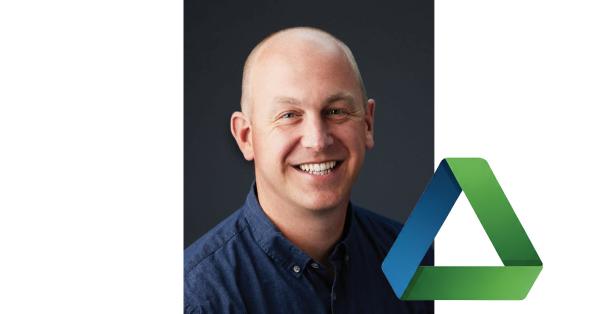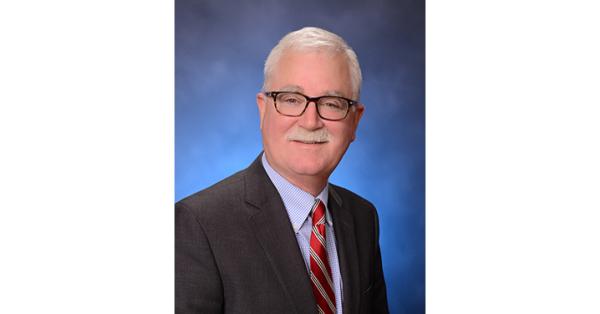Washington, D.C. – “Today, with great pleasure, I am signing into law a landmark measure that may finally give the American worker solid protection in his pension plan.” With these words on September 2, 1974, President Gerald R. Ford signed the Employee Retirement Income Security Act (ERISA) into law. This landmark legislation, now 50 years old, was a watershed moment in America for pensions and retirement security. Perhaps most importantly, ERISA also created the Employee Stock Ownership Plan (ESOP) under federal law. Today, we recognize and honor that achievement and reflect not just on the events that brought about the creation of ESOPs, but where they might go in the next 50 years.
“It’s fitting that today, Labor Day, is the fiftieth anniversary of the law creating the modern employee stock ownership plan, which has done extraordinary good for American workers in so many ways. The employee ownership concept, begun as an idea more than 50 years ago, now has decades of practice, research, and proof showing its multitude of successes. An idea forged in retirement security has also led to a quiet revolution in workplace culture, which is more desirable now than ever before. The ESOP record is clear and unmistakable, providing hope that this model’s benefits can extend to more workers nationwide,” said Jim Bonham, President and CEO of The ESOP Association, the largest and oldest trade association dedicated to promoting ESOPs and representing employee owners, their companies, and the professionals who advise them.
History
Though we celebrate 50 years of ESOPs today, employee ownership has been around since the founding of the nation. An early Congress, for example, debated rebuilding the New England cod fishing fleet following the Revolutionary War and incorporated employee ownership principles at that time. It was none other than Thomas Jefferson and Alexander Hamilton who came together to insist that any federal subsidy for shipbuilding must include a requirement of shares in the catch for the crews of those vessels. Benjamin Franklin also pursued a form of employee ownership in print shops in the early 1700s. In the mid-19th century, several U.S. companies began to consider stock grants to certain employees, providing them some ownership and connection to their means of financial production. But it was Louis Kelso, economist and attorney, who shared with the world his concepts for distributing capital more equally beginning in the 1940s, in part as a reaction to the Great Depression and other economic upheaval at that time. However, it would still take decades – and another series of economic events -- before Kelso’s idea took off.

In the 1960s and early 1970s, several private pension failures and scandals led to political pressure to address the nature of pensions. Poor funding practices, mismanagement, company failures, and a general lack of transparency built up. According to the non-partisan Congressional Research Service (CRS), ERISA “was passed in response to instances in which employers had failed to prudently manage pension funds, had terminated pension plans without sufficient assets to pay the benefits employees had earned, or had created impediments to earning a pension, such as onerous age and service requirements.” In 1974 with bipartisan support, the Employee Retirement Income Security Act (ERISA) passed. With it, and because they were deemed retirement plans, employee stock ownership plans were born. ESOPs, the dream of Louis Kelso, were finally launched and perfected through several subsequent legislative efforts that promoted and empowered them to introduce broad-based ownership for American workers.
Today
Fifty years later to the day, ERISA still stands as landmark law in the pension and retirement space. Today, though it has provided much good and stability, it remains imperfect and in need of update. Since most legislation tends to be reactive in nature, and ERISA is no exception, it has been amended, expanded, and updated several times as circumstances changed, or developments required. Proponents point to many areas of success, but one retirement security tool stands out – the ESOP. ESOPs, as envisioned by Kelso have grown to encompass and help support more than 10.3 million families, meaning 13% of American families have some interest in an employee stock ownership plan. There are more than 6,200 ESOP companies today, with substantial representation in manufacturing, professional services, and construction sectors, among several others. More than $2 trillion in ESOP assets – real wealth, accumulated by sweat equity of workers – has been generated. The average assets per employee is $165,000, which is typically greater than other pension plans. In fact, multiple studies have shown that ESOP participants have about double the retirement wealth of similar non-ESOP individuals. Employee owners feel (and are) more prepared for retirement, with good reason – their ESOP helped provide it.
But the success of ESOPs goes beyond retirement, wealth creation, and income equality.
Employee owners in ESOPs are six times less likely to be laid off, promoting job security. Employee owners are twice as likely to receive training from their employer, have a longer tenure at their employer, and report higher satisfaction with their job. Employee-owned companies report higher productivity and profitability. ESOPs work better for employees and companies alike.
Aligning worker engagement and motivation has led to not just economic prosperity for workers, but community stability as well. Employee owners were twice as likely to report that their companies made an effort to provide opportunities in their communities, and ESOPs were four times more likely to retain jobs during the Great Recession. And ESOPs help reduce wealth inequality. ESOPs work better for our communities and country.
When measured by actual retirement security provided, and the substantially better savings and workplace experience of employees, ESOPs have become the single most effective retirement plan in our nation in the five decades since ERISA passed.
Future
What do the next 50 years hold for ESOPs? That is always hard to predict, of course. But many of the economic issues that drove the passage of ERISA are once again gaining prominence. The gains made by ERISA, though substantial, remain unrealized. American workers and families still wrestle with retirement security, and for non-ESOP employees, it is getting worse, not better. Our communities, especially in rural areas, still feel the sting of business closures that affect the whole town. Too many jobs support businesses owned by non-local investors or funds, that slowly drain the profits and vitality from our communities to produce higher and higher profits for those investors. Business owners will always face questions about how best to maintain and continue their legacy, and never more so than as the “silver tsunami” of retiring baby boomer business owners continues to crest. Our country still faces real concerns about economic instability, competitiveness, and how best to promote growth. So, while we cannot predict the future, we do know that some issues are likely to endure, and ESOPs have a proven track record of helping alleviate them.
Further, changing social issues only make ESOPs more relevant. Up-and-coming generations of American workers are seeking not just a paycheck, but increasingly they want their work to be coupled with their values. The treatment of workers, the investment in their safety and training, sustainability, and job satisfaction matter more than ever before. Societally, an increased focus on inequality, wage and wealth gaps, and economic ownership are on the rise and unlikely to disappear from our political discourse.
The good news on the 50th anniversary of legislation that created ESOPs is that we do not necessarily need a new idea to help tackle these pressing issues – ESOPs already show us a successful path forward. ESOPs should occupy more space in our nation’s landscape over the next 50 years, certainly not less.

Finally, employee ownership can and should look outside our borders. The Employee Ownership Foundation is working to promote employee ownership and the ESOP model globally, most notably with the Oxford Symposium on Employee Ownership, which has now grown to dozens of countries and a hundred-plus attendees. A few nations have expanded their employee ownership models and many more are considering it. Because of our decades of experience in the U.S., stemming from ERISA, Kelso’s foresight, and Congress’s support, other nations look to ours for leadership. The EOF has answered that call and is collaborating with partners beyond our borders, helping plant the ESOP flag globally.
ERISA’s fiftieth birthday, and the success of ESOPs that were born out of it, serve as bright lights, not just to American workers who share the dream of ownership and the dignity, security, and wealth creation that accompany it, but as beacons to the world as well. Employee ownership is not just something from fifty years in our past, it is a better path forward for our shared future in our communities, our country, and around the world.
Additional Resources on Employee Ownership
The History of Employee Ownership >>
The 10 Best Things About ESOPs >>
Small Business Crisis, the “Silver Tsunami” >>
ESOPs and Business Succession >>
The Oxford Symposium on Employee Ownership >>
About the ESOP Association
The ESOP Association is the largest organization in the world supporting employee-owned companies, the more than 10 million U.S. employees who participate in an ESOP, and the professionals who provide services to them. Headquartered at the International Employee Ownership Center in Washington, DC and operating as a 501(c)6 organization with the affiliated Employee Ownership Foundation, The ESOP Association conducts and funds academic research, provides more than 160 annual conferences and events attended by nearly 15,000 individuals, and advocates on behalf of employee owners and their businesses to federal and state lawmakers.
For Media Inquiries, Contact:
Greg Facchiano
Vice President of Government Relations and Public Affairs
gfacchiano@esopassociation.org







